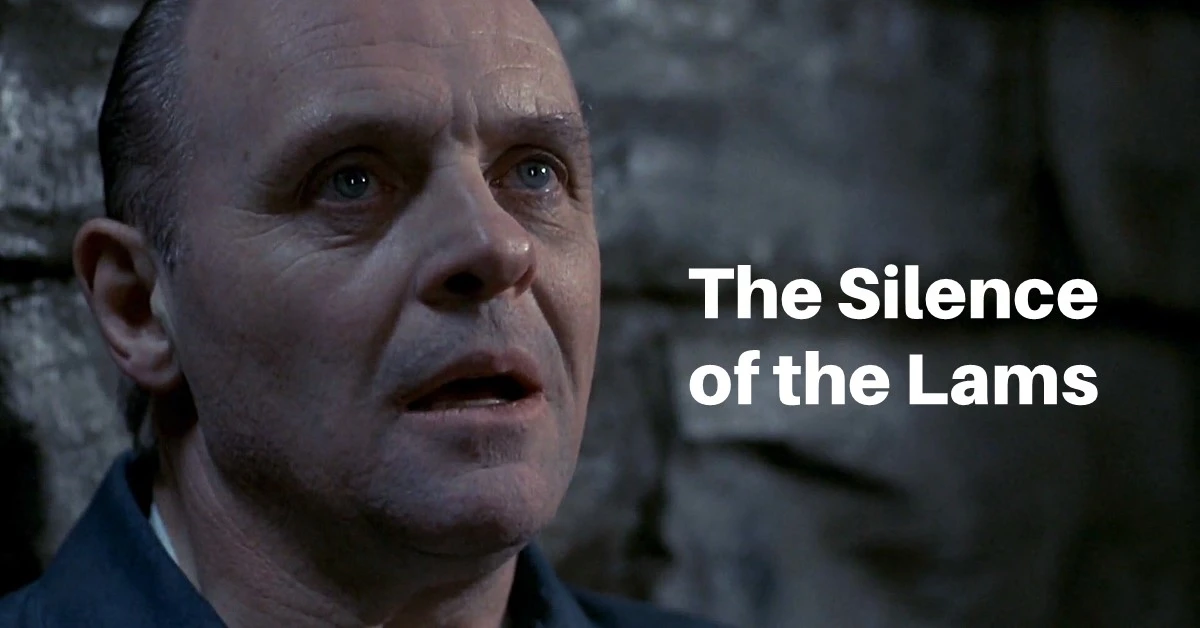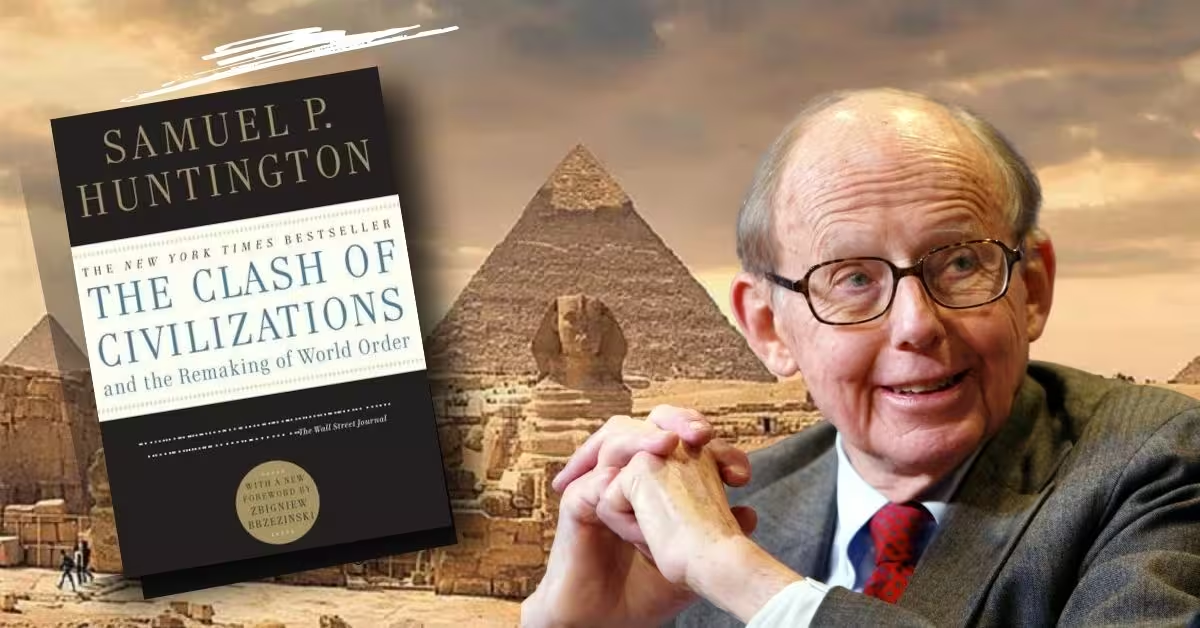The Silence of the Lambs is a 1991 American psychological horror thriller directed by Jonathan Demme, adapted by Ted Tally from Thomas Harris’s 1988 novel of the same name.
Widely regarded as a cinematic masterpiece, the film stars Jodie Foster as Clarice Starling, a determined young FBI trainee tasked with apprehending a serial killer, Buffalo Bill (Ted Levine).
She tries to find the help of the brilliant yet terrifying Hannibal Lecter (Anthony Hopkins), a psychiatrist and cannibalistic killer. The film broke ground in the thriller and horror genres, garnering critical acclaim and winning five Academy Awards, including Best Picture. Its tense narrative, psychological depth, and compelling characters continue to captivate audiences, cementing its place in the annals of film history.
Plot
The plot of The Silence of the Lambs follows Clarice Starling, an ambitious apprentice at the FBI Academy, as she is thrust into a high-stakes investigation to catch the infamous serial killer known as Buffalo Bill.
The film opens with Starling being summoned by Jack Crawford (Scott Glenn), the head of the FBI’s Behavioural Science Unit, to interview Hannibal Lecter, an incarcerated psychiatrist and cannibal who might have insights into Buffalo Bill’s motives.
Lecter, a man of incomparable intelligence, initially snubs Starling’s attempts to engage him. However, after witnessing a humiliating encounter involving another inmate, Lecter offers Starling a clue that leads her to an unsolved murder case.
Starling’s interaction with Lecter is both terrifying and mesmerizing, a psychological game in which Lecter demands personal stories from Starling in exchange for cryptic clues about Buffalo Bill, in Quid pro qou fashion.

The stakes are raised when Buffalo Bill kidnaps Catherine Martin, the daughter of a prominent U.S. senator. Starling, now working against the clock, continues to seek Lecter’s help despite knowing how dangerous it is to trust him. Lecter plays a dual role: on the one hand, he provides useful hints about Buffalo Bill, while on the other, he delights in toying with Starling’s emotions and psyche.
Their conversations reveal Clarice’s traumatic childhood, including her inability to save lambs of the rancher from slaughter, a metaphor for her quest to save innocent victims like Catherine Martin.

Lecter ultimately escapes his prison in a gruesome display of violence and ingenuity killing two prison officers.
Starling, meanwhile, unravels the mystery of Buffalo Bill’s identity. She discovers that Bill, whose real name is Jame Gumb, is crafting a suit out of the skin of his victims. The climax is a tense showdown in Buffalo Bill’s home, where Starling, armed with both knowledge and determination, successfully rescues Catherine and kills Gumb.
Clarice got promoted.
Themes and Characters
The Silence of the Lambs is rich in thematic complexity which explores the issues of power, identity, and the human psyche. Central to the film is the relationship between Clarice Starling and Hannibal Lecter, two characters who represent opposing sides of morality and intellect but share a mutual respect. Their interactions form the emotional core of the film.
Clarice Starling
Clarice, portrayed by Jodie Foster, is an unconventional protagonist for a thriller. She is young, inexperienced, and one of the few women in the male-dominated world of law enforcement.
The film subtly explores the gender dynamics at play as Clarice navigates her way through a world where she is constantly underestimated by her male colleagues.
Her vulnerability is contrasted with her resilience, and it is this emotional depth that makes her one of the most memorable heroines in film.
Hannibal Lecter
Anthony Hopkins’s portrayal of Hannibal Lecter is iconic. Lecter is both terrifying and charismatic, a character who blurs the line between civility and savagery. Despite his monstrous actions, Lecter possesses a sharp intellect and a cultured demeanor, making him a deeply complex villain.
His interactions with Clarice are laced with manipulation, as he forces her to confront her past traumas while withholding critical information about Buffalo Bill. Lecter’s fascination with Starling is both paternal and predatory, and their dynamic is a psychological chess game that propels the narrative.
Buffalo Bill
Buffalo Bill (Jame Gumb), played by Ted Levine, is a deeply troubled individual, driven by confusion over his identity and self-loathing.
His desire to transform himself by creating a “woman suit” made from the skins of his victims reflects themes of body dysmorphia and the struggle for personal identity.
Though he is the film’s primary antagonist, his presence is overshadowed by the psychological battle between Starling and Lecter.
Themes of Power and Gender
The film examines power dynamics, especially through the lens of gender. Clarice is repeatedly scrutinized and objectified by male colleagues, prisoners, and even Lecter.
Yet, she never allows herself to be defined by these perceptions. Her journey is not just about capturing a killer but about asserting her agency in a world that seeks to diminish her.
In contrast, Lecter’s power is rooted in his mind. Even in captivity, he controls the narrative, manipulating those around him, including Starling.
Feminism
While The Silence of the Lambs was basically renowned, it was also the subject of controversy, particularly with regards to its treatment of gender and se*xual identity.
Feminist critics appreciated the portrayal of Clarice Starling as a strong, intelligent, and capable female protagonist in a male-dominated field. Starling’s character was seen as a trailblazing representation of women in film, one who was not se*xualized or diminished but rather allowed to carry the narrative on her own merits.
Nevertheless, some feminist scholars like Betty Friedan criticized the film for its depiction of violence against women. Friedan expressed her dismay that a film focusing on the “evisceration, the skinning alive of women” could win multiple Oscars. In her view, the film’s success highlighted society’s desensitization to violence against women.
In the article, Seeing the Female Body Differently: Gender Issues in The Silence of the Lambs by Diane Dubois, published in the Journal of Gender Studies (2001), they examine how the film The Silence of the Lambs criticizes traditional gender roles and representations of femininity.
Dubois argues that the film subverts the depiction of women commonly found in four classic genres: the serial killer movie, the horror/monster movie, the pupil-mentor dynamic, and the psychiatrist-patient film.
In traditional films, he says, women are often portrayed as passive objects or victims, punished for rejecting conventional roles such as marriage or motherhood. When they show ambition, they are often demonized or reduced to mere spectacles for the male gaze.
However, The Silence of the Lambs challenges these norms through its protagonist, Clarice Starling. The film emphasizes the pressures she faces in a male-dominated world, particularly how she is objectified and belittled by the men around her. Yet, Clarice is depicted as a strong and ambitious character, whose career drive is not punished but rather portrayed as necessary for her success.
Dubois highlights the nuanced relationship between Clarice and Hannibal Lecter, where their mutual respect subverts the typical mentor-mentee dynamic often seen in films.
Rather than being undermined or led astray, Clarice’s ambition and strength are reinforced, contrasting with the treatment of women in other genres where they are often punished for their independence.
The article also touches on how the film critiques the male gaze by offering shots from Clarice’s perspective, allowing the audience to empathize with her instead of objectifying her. Furthermore, the character of Buffalo Bill, the film’s antagonist, is discussed in relation to his troubling gender identity issues, exploring how the film handles complex themes of gender without offering simple explanations or stereotypes.
Overall, Dubois argues that The Silence of the Lambs* is a profoundly feminist movie that challenges patriarchal cinematic conventions and offers a more nuanced and empowered portrayal of female characters.
The Silence of the Lambs and American Psycho
In his article, The Aesthetics of Serial Killing: Working Against Ethics in The Silence of the Lambs (1988) and American Psycho (1991), Sonia Baelo Allué, explores the complex relationship between aesthetics and ethics in serial killer fiction.
It observes how these narratives offer audiences pleasure through pattern recognition, control over chaos, and identification with the law, but at the same time may risk diminishing the moral implications of murder by transforming it into a kind of aesthetic game.
Baelo compares two iconic works: Thomas Harris’s The Silence of the Lambs (1988) and Bret Easton Ellis’s American Psycho (1991). While both involve serial killers, they approach the subject differently.
The Silence of the Lambs follows genre conventions, offering readers the satisfaction of deciphering clues and ultimately restoring social order.
The narrative aligns more with aesthetics, where murders become an intellectual puzzle to solve, and the readers identify with the detective, Clarice Starling. The aestheticization of murder distances readers from its ethical implications, allowing them to engage with the narrative as entertainment. Lecter, though a villain, is portrayed as a cultured, refined figure, further blending morality with aesthetic appeal.
In contrast, American Psycho consciously disrupts these conventions by confronting readers with excessive violence and presenting serial killings without a discernible pattern or moral resolution.
The protagonist, Patrick Bateman, represents the ultimate consumer in a capitalistic society, and his violent acts are narrated alongside trivial details of his lifestyle, creating a jarring juxtaposition.
Ellis’s work critiques the aestheticization of violence by making readers uncomfortable, denying them the closure and control that conventional serial killer narratives offer.
Baelo concludes that The Silence of the Lambs provides comfort through aesthetics, offering a controlled narrative that appeals to readers’ desire for order.
In contrast, American Psycho forces readers to confront the horrors of violence directly, challenging their ethical complacency. Through this comparison, the article highlights the tension between ethics and aesthetics in serial killer fiction, where one work conforms to genre expectations and the other subverts them to provoke deeper reflection on violence and society.
The film also delves into the nature of evil and the human psyche.
Lecter and Buffalo Bill represent two sides of this exploration: one is the embodiment of calculated intellect, while the other is a chaotic force driven by uncontrollable impulses. Clarice, caught between these two forces, must confront not only the killers but her own inner demons.
Cast
The performances in The Silence of the Lambs are a significant reason for its success. The cast includes:
- Jodie Foster as Clarice Starling
- Anthony Hopkins as Dr. Hannibal Lecter
- Scott Glenn as Jack Crawford
- Ted Levine as Jame “Buffalo Bill” Gumb
- Brooke Smith as Catherine Martin
- Anthony Heald as Dr. Frederick Chilton
Foster and Hopkins received widespread praise for their roles, both winning Academy Awards for their performances.
Hopkins’s portrayal of Lecter, despite limited screen time, left an indelible mark on cinematic history, while Foster’s portrayal of Starling is equally nuanced, blending vulnerability with determination.
Lessons
The Silence of the Lambs offers several valuable lessons, particularly regarding the nature of fear, power, and morality.
One of the key takeaways is, the importance of confronting personal fears and traumas. Clarice’s journey is as much about her internal struggle as it is about catching Buffalo Bill. Her drive to stop the killer is fuelled by her desire to silence the metaphorical lambs that haunt her dreams—her unresolved guilt and sense of helplessness from childhood.
The film also explores the perils of misjudging others based on gender or appearance.
Clarice, dismissed by many because she is a woman, proves to be the most capable and intelligent agent in the Buffalo Bill case. Similarly, Hannibal Lecter, though imprisoned and seemingly powerless, uses his intellect to manipulate and control those around him.
Critical Response to The Silence of the Lambs
The Silence of the Lambs received extensive critical acclaim upon its release and continues to be one of the highly regarded by film critics and audiences alike. It is the 65th film of American Film Institute’s 100 America’s Greatest Films.
The Library of Congress added it to its Complete National Film Registry Listing in 2011. I included it in my 101 Best Must-Watch Films.
The film’s intelligent script, masterful direction, and standout performances by Jodie Foster and Anthony Hopkins earned it numerous accolades and a lasting legacy in the thriller and horror genres.
Praise for Performances
One of the film’s most celebrated aspects was the performances of Jodie Foster and Anthony Hopkins, which were praised as career-defining.
Foster’s portrayal of FBI trainee Clarice Starling was lauded for its emotional depth and nuance. Critics appreciated her ability to portray a young woman navigating a male-dominated world, balancing vulnerability and strength in a way that made her character relatable yet heroic.
Anthony Hopkins’ performance as Hannibal Lecter is one of the most iconic in cinema history. Despite appearing on screen for just over 16 minutes, Hopkins’ chilling portrayal of the cannibalistic psychiatrist left an indelible mark. His controlled, calm demeanour contrasted with his monstrous nature, creating a villain who was both fascinating and terrifying.
Roger Ebert, one of the most prominent film critics, was particularly struck by Hopkins’ ability to make Lecter a compelling figure. Ebert noted the terrifying qualities of the character, describing Hopkins’ performance as chillingly effective.
In his review, Ebert called the film a horror masterpiece” and later included it in his list of The Great Movies.
The Film’s Psychological Depth
Many critics praised The Silence of the Lambs for its psychological complexity. Rather than relying on graphic violence or jump scares, the film created a sense of dread through its exploration of the characters’ psyches.
The interactions between Clarice Starling and Hannibal Lecter became the emotional core of the film, offering a psychological duel that was as gripping as the physical pursuit of Buffalo Bill.
This psychological depth, combined with the film’s ability to maintain tension, helped it transcend the typical thriller formula.
Review aggregator Rotten Tomatoes reports that 95% of 153 critics gave the film a positive review, with an average rating of 8.80/10. The consensus reads: “Director Jonathan Demme’s smart, taut thriller teeters on the edge between psychological study and all-out horror, and benefits greatly from stellar performances by Anthony Hopkins and Jodie Foster”.
Metacritic, which provides a weighted average score, assigned the film a score of 86 out of 100, based on 20 reviews from mainstream critics, indicating “universal acclaim”.
Controversy over Buffalo Bill’s Character
The portrayal of the film’s antagonist Buffalo Bill, sparked significant debate within the LGBTQ+ community.
Some critics argued that the film prolonged harmful stereotypes by associating transgender identity with deviance and psychopathy. Buffalo Bill’s desire to create a suit from women’s skin was interpreted by some as a conflation of trans identity with monstrousness, an association that many felt was damaging to the transgender community.
While the film explicitly states that Buffalo Bill is “not really transsexual,” critics felt that his portrayal nonetheless suggested a link between gender dysphoria and violence.
Director Jonathan Demme defended the film, arguing that Buffalo Bill was not a representation of the LGBTQ+ community but rather a deeply troubled individual whose self-hatred manifested in extreme ways.
Despite Demme’s defence, the portrayal of Buffalo Bill remains a point of contention, with some transfeminist scholars labelling the film as one of the most significant examples of “pop culture transmisogyny.”
The criticism has endured over the years, with discussions about the film’s depiction of gender identity continuing in contemporary film discourse.
Legacy and Continued Praise
In spite of these controversies regarding The Silence of the Lambs, it has maintained its place as one of the greatest films ever made. For many women, Starling is the strong female character that inspire many to join FBI.
The American Film Institute (AFI) ranks it among the top 100 greatest American films of all time. Hannibal Lecter was named the number one movie villain in AFI’s “100 Years…100 Heroes & Villains” list, while Clarice Starling was listed as the sixth greatest heroine.
The film’s influence on the thriller and horror genres is undeniable. It paved the way for more complex portrayals of serial killers in film and television, particularly through characters who are intelligent and manipulative rather than purely monstrous.
Shows like Dexter and Hannibal owe a significant debt to The Silence of the Lambs for redefining how serial killers are depicted on screen.
Quotations
Good nutrition has given you some length of bone, but you are not more than one generation from poor white trash, are you Agent Starling? Hannibal
Discourtesy is unspeakably ugly to me.
We covet what we see every day.
Conclusion
The Silence of the Lambs is more than just a thriller; it is a psychological exploration of human nature, fear, and identity. Its brilliant performances, complex characters, and intricate plot make it one of the greatest films of all time.
The dynamic between Clarice Starling and Hannibal Lecter is particularly compelling, a cat-and-mouse game that transcends the typical hero-villain relationship.
The film remains relevant today for its treatment of gender dynamics, the psychological depth of its characters, and its examination of power and morality. In my personal view, The Silence of the Lambs stands as a testament to the power of storytelling in film.
It not only entertains but also challenges audiences to reflect on the darker aspects of the human psyche.






